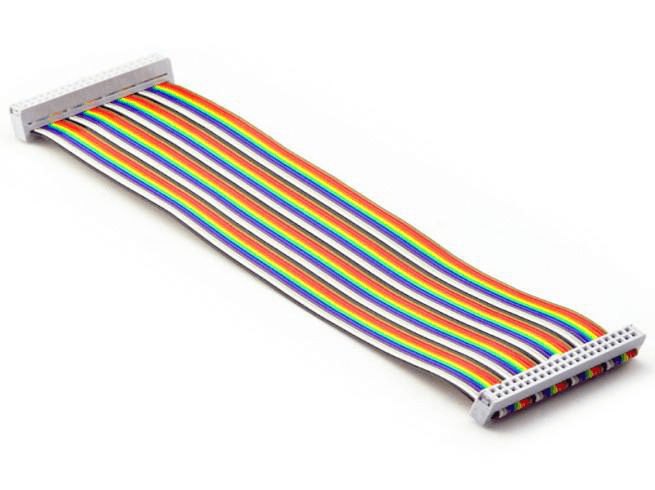The power cord is part of the electrical system. What kind of power cord is there? What are the factors that affect quality? How to choose the right power cord?
There are different power cord types on the market. The power cord you choose and the purpose of use depend on many factors. The most important factor is the technical specifications of the power cord. Our article include this in detail.
Get Your Free Sample!
Explore our custom services now. Email us at [email protected] for more details.
CHAPTER 1: What Is A Power Cable
A power cable, otherwise known as an electrical cable is used to transmit electricity or power. A power cable provides connection and transmits power to power stations, electricity-powered devices, telephones, televisions, and wired computer networks.
Power cables are available in many types, and they differ in size, configuration, and performance.
In this part, you will learn all about the power cord.

Power cable definition
Power cord connections otherwise known as a plug, connector or a cord is one or more wires covered in a plastic sheath that allows the transmission of data or power between devices.
Types of power cables
Within and around computers, different types of power cables are used as:
- AT cable – Used with the early generations of keyboards.
- ATA cable – Used with disc drives and hard drives.
- CAT5 cable – Used with network cards.
- Coaxial cable – Used with projectors and television.
- Composite (RCA) cable – Also used with projectors, television service, and consoles.
- DisplayPort cable – Used with monitors and computer.
- DVI cable – Used with projectors, monitors, and other display devices.
- e-SATA cable – Used with external hard drives
- Firewire (IEEE-1394) cable – Used with external hard drives and digital cameras.
- HDMI cable – Used with projectors, monitors, Blu-ray/DVD players, and other display devices.
- MIDI cable – Made for musical keyboards and other equipment.
- Mini-plug cable – Made for microphones, headphones, and speakers.
- Molex power cable – Made for use inside the computer.
- IDE/EIDE cable – Made for disc drives and hard drives.
- Parallel cable – Made for printers.
- PS/2 cable- Made for mice and keyboards.
- S-Video cable – Made for digital cameras, projectors, and other display devices.
- S/PDIF cable – Made for surround sound and DVD.
- SATA cable – Made for disc drives and hard drives.
- SCSI cable – Made for tape drives, disc drives, and hard drives.
- Serial (RS-232) cable – Used with a modem and a mouse.
- Thunderbolt cable – Used with Apply devices and displays.
- USB – Used with the mouse, MP3 players, keyboard, printer, and other devices.
- VGA/SVGA cable – Used with projectors and monitors.
The following are the three main types.
Coaxial Cable
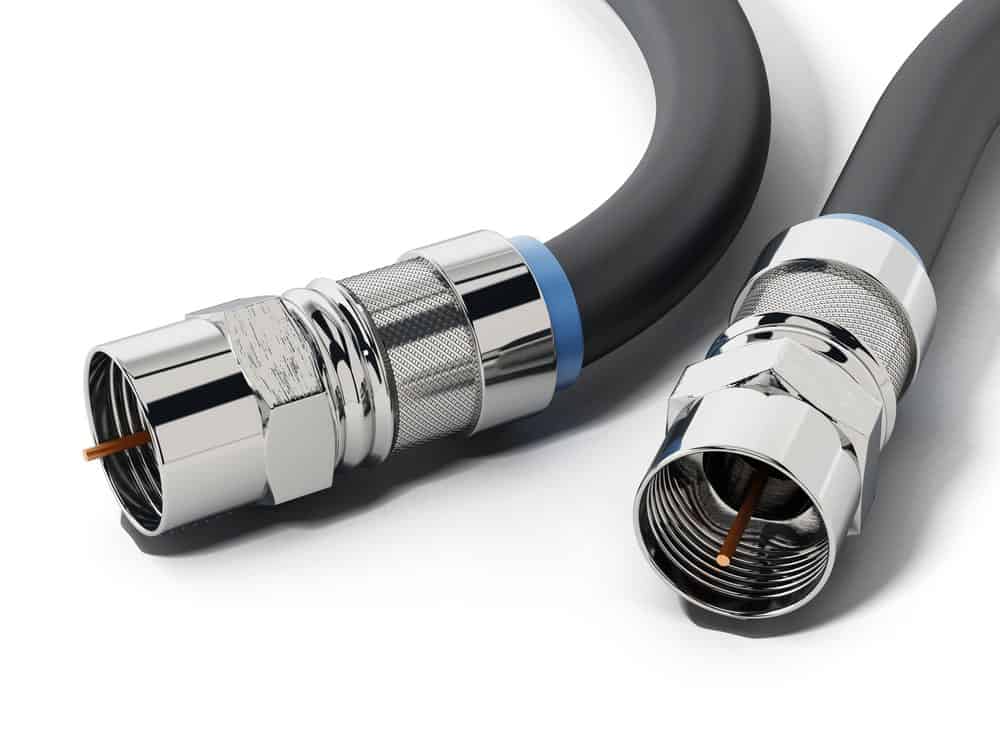
A typical coaxial power cable comes with a core plated with copper and encircled by a dielectric insulator. The insulating layer is encircled by an interlaced shield of copper which is finally enclosed with an outmost plastic covering. The Coaxial power cables vary in cost, power handling abilities, performance, size, and flexibility.
Coaxial power cables are used to connect home video and audio equipment, local area network components, and television networks. The Coaxial power cables are available in different types, such as leaky cable, hard-line, twin-axial, semi-rigid, RG/6, and biaxial power cables.
Ribbon Cable
A ribbon power cable, otherwise known as flat-twin cables or multi-wire planar electrical cable is composed of multiple insulated wires that run parallel to each other. The composition of parallel wiring in this cable allows various signals of data to transmit simultaneously.
According to “Optical Communications Essentials,” a typical ribbon power cable is made up of 4-12 wires, and it is mostly used to connect two network devices. Also, a ribbon power cable connects the motherboard of a computer with the other core central processing unit of a computer.
Twisted Pair Cable
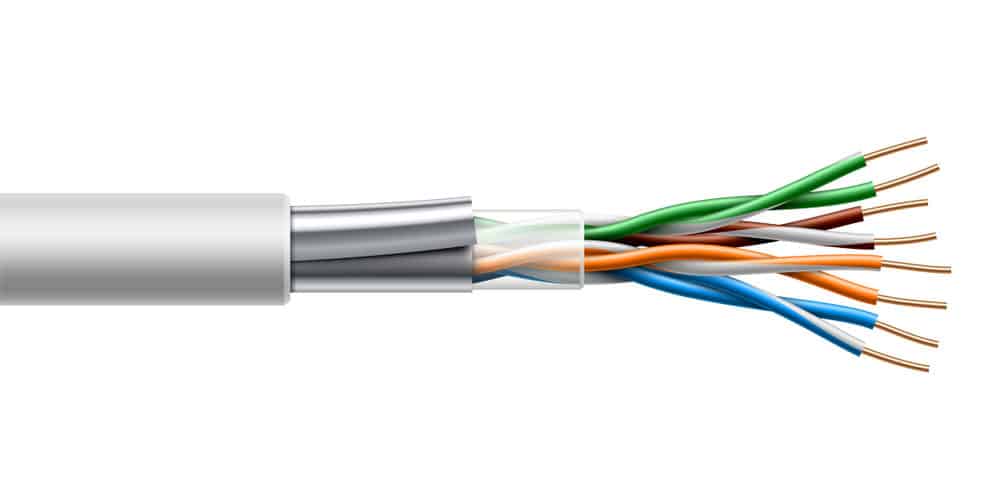
A twisted pair power cable is made of color-coded pairs of insulated copper wires, which are interlaced. The diameter of each copper wire varies from 0.4 to 0.8mm, and the number of insulated copper wire pairs varies in different types of twisted pair power cables.
The number of insulated copper wire pairs in a twisted pair cable dyer jeans the resistivity of the cable, that is, a twisted pair power cable with a high number of couples will have high resistance to crosstalk and external noise. Twisted pair power cables are not costly, that are flexible and easy to install. Twisted pair power cables are used to wire local area networks and for telephone cabling.
Shielded version of the above
A shielded power cable is composed of one or more insulated wires that are enclosed collectively by an aluminum Mylar foil or interlaced braid shielding.
The shielding protects the cable from the interference of power and external radio, thereby allowing the signal transmission to run effectively. Power cables that carry high voltage are common shielded.
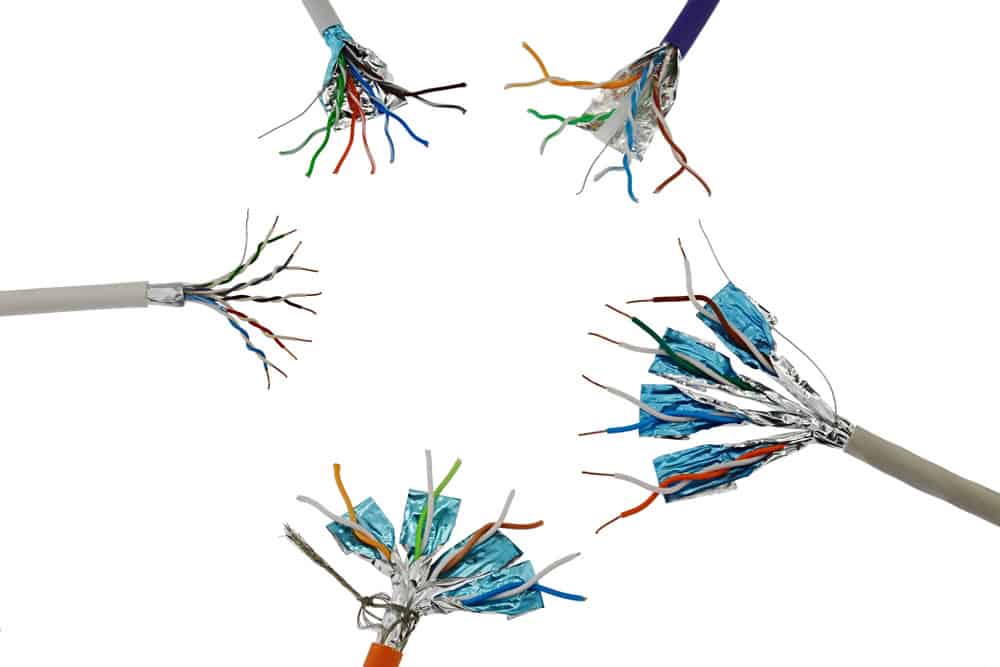
The components of power cables
A power cable is made of three necessary components:
- Conductors,
- Insulation,
- Protective jacket.
The makeup of each cable type is dependent on its use and application.
Three primary factors determine the construction of a power cable as well as the materials used:
- Working voltage – which determines the thickness of the insulation;
- Current – carrying capacity – which determines the cross-sectional size of the conductors in the cable;
- Environmental conditions such as includes sunlight or chemical exposure, water, mechanical impact, and water which determines the form and what makes up the outer jacket of the cable.
Cables that are meant to be buried in the ground or installed in the open may include metal armor that is composed of wires arranged in spirals around the cable or a corrugated tape designed around it. While the metal armor is made of aluminum or steel and installed in the earth ground, it isn’t designed to bear the current load during normal operation.
Get Your Free Sample!
Explore our custom services now. Email us at [email protected] for more details.
CHAPTER 2: Power Cable Types in Detail
A power cable is any cable that transmits electricity or power a device. A notable example is the power cord that connects the Molex style cable in the computer to your computer. You will find below the list of common cable types for electronics and computers, as well as the devices that use the cables.
Monitor power cable
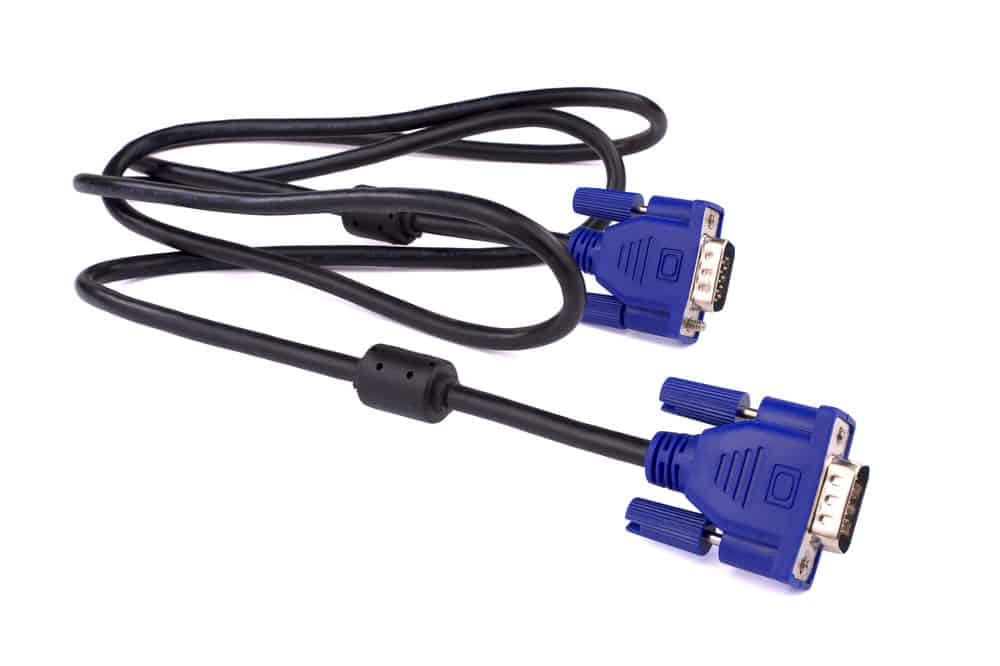
A monitor power cable is used to establish a connection between the computer and the monitor to display the output of the network. This connection between the computer and the monitor can be analog or digital. Most laptops, computers and other portable devices come with a built-in hardware and monitor connector that allows the mounting of monitor power cable.
The connection between the computer and the monitor using a monitor power cable is required to get an output display. Here are some common types of monitor power cable:
Digital visual interface (DVI)
Video graphics array (VGA)
High-definition multimedia interface (HDMI)
DisplayPort
A VGA power cable is used to connect an analog PC monitor to a laptop or a PC. VGA power cable uses an HD15 connector to connect the monitor and the computer. Video graphics array is commonly used to produce analog signals whereas other types of monitor power cables are used to create digital signals.
Hard drive power cables
There are different types of hard drives, and each type requires different power cables. To make a connection between a hard drive and a computer, it’s vital that you have the ideal hard drive cable and plug in the wires in the appropriate port.
Hard drive power cables come in three types – IDE/PATA, SATA, and SCSI. Integrated Drive Electronics (IDE) drives otherwise known as Parallel AT Attachment (PATA) drives are found in personal computers.
However, manufacturers have stopped installing IDE/PATA drives in new personal computers. As such, IDE/PATA drives are only found in older computers that were made before 2009.
The IDE/PATA technology was made in 1986, and the SATA technology now displays the technique. The SATA (Serial Advanced Technology Attachment) drives were created in 2003 and are found only in personal computers.
SCSI (Small Computer System Interface) drives are found only in mainframe/high-end computers. The SCSI technology has been introduced since 1981, and it has been in existence till today, though several revisions have been made to the drives.
IDE/PATA Cable
An IDE/PATA hard drive power cable is a ribbon cable that is made up of 40 pins. An IDE/PATA hard drive power cable allows one or two devices of the same or different types to be connected to it at the same time. For instance, an IDE/PATA hard drive power cable may combine with an IDE/PATA DVD-R drive.
SATA hard drive power cables.
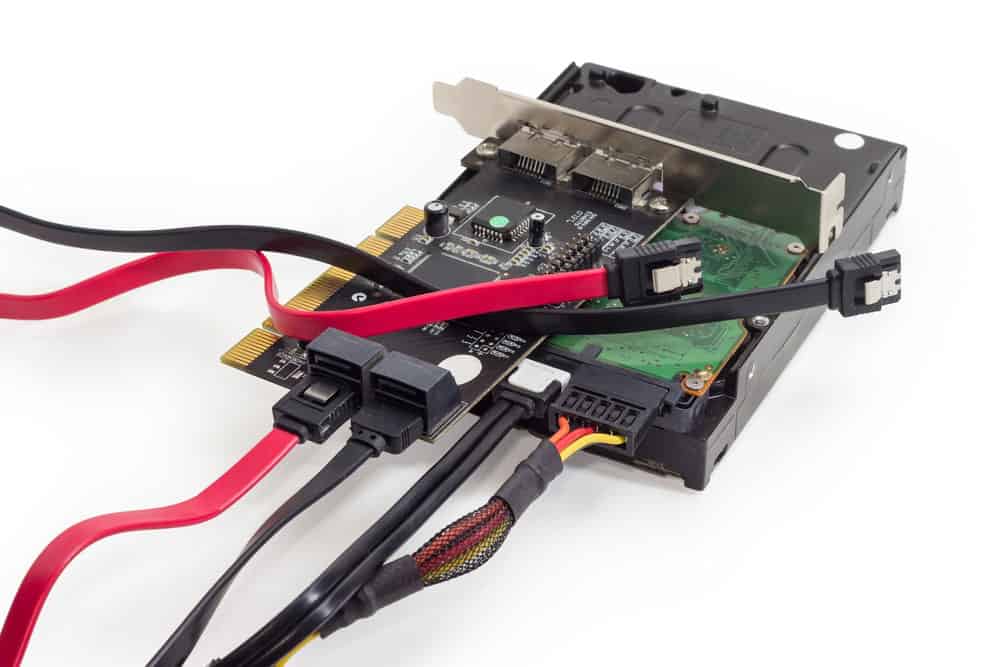
A SATA hard drives power cable is made up of seven conductors and is smaller when compared to an IDE/PATA hard drive power cable. A SATA hard drive power cable connects a hard drive to one connector on the SATA controller usually found in the motherboard of a computer.
SCSI hard drive power cables
The SCSI hard drive cable is quite similar to an IDE/PATA cable as they both use ribbon cables. However, SCSI hard drives power cable to have more pins that IDE power cables through the number of pins in an SCSI power cable depends on the SCSI.
That is, an SCSI hard drive power cable may have 60 or 68 pins depending on the interface of the SCSI. Similar to IDE, SCSI hard drive power cable allows multiple devices to connect to a single channel. Depending on the interface of the SCSI, as many as 15 devices may be connected to the channel of just one SCSI.
USB power cables
The USB power cable was introduced to standardize the connection of peripherals such as video cameras, portable media players, keyboards, printers, pointing devices, network adapters, disk drives, and digital still to personal computers to supply electric power and communicate.
USB port has dramatically replaced parallel and serial ports and is now a commonplace on different devices. Here are the common types of USB power cables.
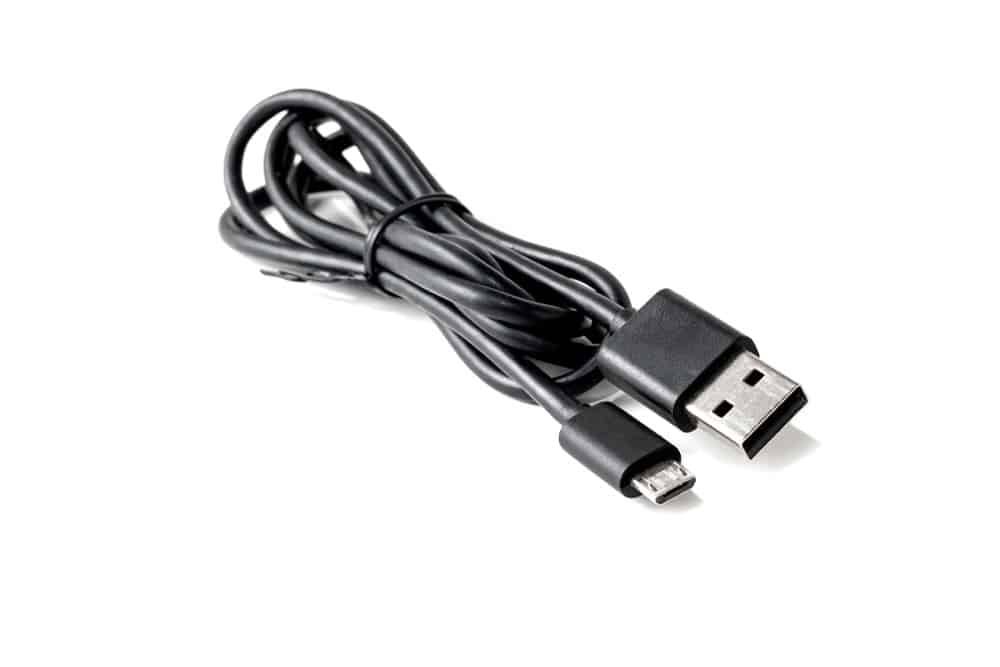
Type-A:
Most USB power cables have a type – A connector on one end. Most peripheral devices such as mice and keyboards have a type-A connector. Personal computers have multiple type-A ports, power adapters and other accessories also use a type-A port for charging and data transfers.
Type-B:
The type-B USB power cables are mostly used for printers as well as other devices that connect to a computer. The type-B USB power cable connector is almost square in shape and not typical compared to the type-A cables.
Mini-USB:
Mini-USB was the standard connector for most mobile devices before the introduction of the micro-USB type. As its name implies, mini-USB is smaller than the regular USB, though it’s still used in cameras with non-standard connectors.
Type-C:
Type-C USB power cable is a reversible cable that is designed to transmit power and transfer data faster than the previous USB types. Phone and device manufacturers are starting to adopt this USB cable type for laptops, phones, and tablets.
USB-c:
The USB-c cable isn’t of a USB standard, but Apple adopts it as the connector for iPhones and iPads. The size of the cable’s connector is similar to that of micro-USB, and it works well with all Apple devices manufactured after September 2012. The Apple devices made before September 2012 use a different and large connector.
USB 3
USB 3 is the latest standard for USB, and it offers fast transfer rates. The USB 3 power cable is backward compatible with the previous versions of USB. Though the USB 3 cable is backward compatible with other versions, the increased speed of the cable is only realized when the device is compatible with USB 3.
The USB power cables that you will use mostly and replace are micro-USB and USB-C.
micro USB
Micro-USB is the current standard connector for most portable and mobile devices. Nearly all manufacturers have adopted the micro-USB connector except Apple.
If you own an android phone or a tablet, chances are you have a micro-USB power cable. Even the diehard Apple lovers cannot stay away from micro-USB since the cable is the most common type of connector for speakers, external power packs, and other devices.
If you are a regular buyer of gadgets, you will discover that you collect a bunch of micro-USB overtime and since the cable can be interchanged, you may not need to buy a separate one except you keep breaking them or losing them.
A quick question, when you go to the market to buy a new micro-USB cable, are you tempted to buy the cheapest one? Chances are you are tempted to buy a cheap micro-USB power cable when you go to the market; this is not a good idea.
Micro-USB cables that are cheap and made to poor quality tend to break easily, and a broken cable is useless when it comes to devising charging. So, the next time you are tempted to buy a cheap cable, save yourself a headache and consider purchasing a quality cable. The different is just the prove and it is worth it.
Another thing to consider is the length of the cable. While short micro-USB power cables are portable, they can leave you sitting next to the power outlet while charging your device.
A longer cable on the flip side can be uneasy to carry about, tangle easily and even be a potential tripping hazard. Consider buying a micro-USB that is three feet long. A cable that is three feet long allows you to charge your device and use at the same time without having to sit beside the power outlet. A micro-USB cable of considerable length is ideal for charging your devices through the length of cable depends on circumstances and individual preferences.
PC Power supply cables
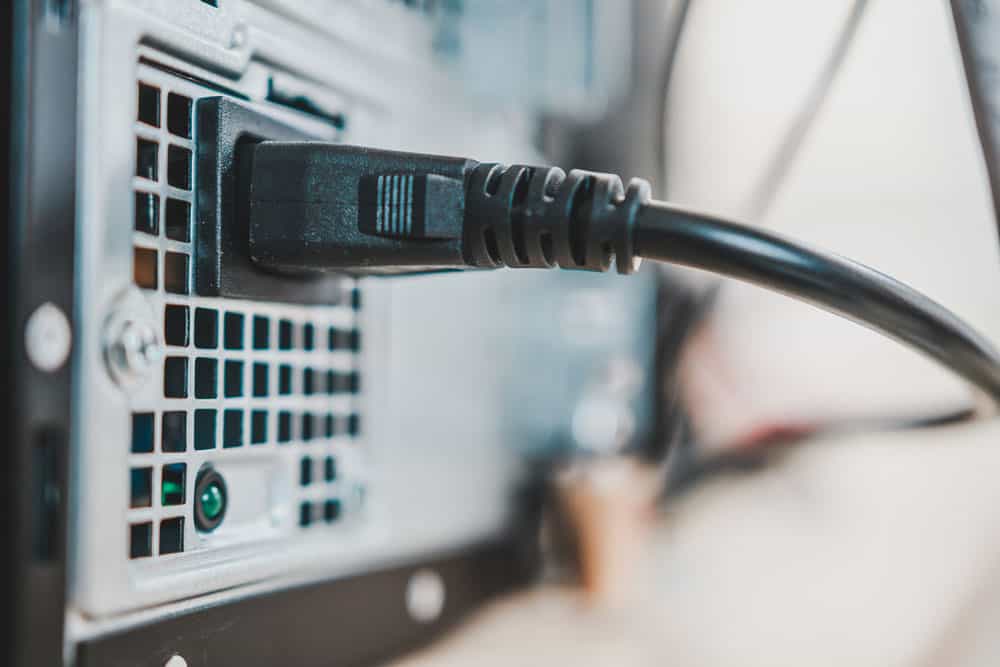
There are different power supply cables in the market today. These power cables were designed in such a way that you cannot go wrong installing them, that is, each power cable is designed for a particular device.
So it’s safe to say that you’d know when you fix a specific power cable to the wrong device. Subsequently, this chapter will talk about different types of power supply cables as well as their uses.
P1 (PC Main / ATX connector)
This power supply cable was designed to provide power to the motherboard, and the mechanism of this power supply is done through the inbound 20-pins or 24 pins power supply cable. A 24-pin power supply cable works well with a motherboard that is 20-pins since the 24-pin power cable can be separated into 20- and 4-pins.
P4 (EPS Connector)
Over time, manufacturers discovered that the motherboard’s pins were not stringing enough to provide sufficient power needed by the processor, that is, the central processing unit. With the drawing of the overclocked CPU rising to 200W, there was a need to design a device that will supply power directly to the central processing unit. Now we have the P4 or EPS connector to provide sufficient power to the central processing unit.
Motherboards that are less expensive cones with a 4-pin connector while the more expensive ones come with 8-pin connectors. Since costly motherboards overclock, the function of the additional four pins is to supply enough power to the central processing unit when overclocking. Motherboards that are used for regular users do not require these extra pins.
Most power supply units (PSU) comes with two cables; 4-pins and 8-pins cable. You do not need to use both cables at a time, but you can always share your 8- pin cable into two 4- pins to make the cable compatible with less expensive motherboards.
PCI-E Connector (6-pin en 6+2 pin)
Through the PCI-E interface of a motherboard, a typical motherboard can provide as much as 75wattage. However, these power is not sufficient for the fast dedicated graphics card. As such, there was a need for manufacturers to design a device that would provide adequate control.
That is where the PCI-E connector comes into play. The PCI-E 6-pin connector is designed to provide extra 75wattage per cable. That is to say that if you have a graphics card with a 6-pin connector, the connector can draw a maximum power of 150wattage, that is 75wattage from the motherboard PCI-E interface and an extra 75wattage from the PCI-E cable.
Graphics cards that are more expensive require the use 6+2 pin PCI-E connector of to provide as much as 150wattage per cable with the 8pins. A typical graphics card with a 6+2 pin PCI-E connector can draw a maximum of 225wattage, that is 75wattage from the motherboard PCI-E interface and 150wattage from the PCI-E connector.
Molex (4 Pin Peripheral Connector)
Molex connectors can provide 5V (red) or 12V (Yellow) to hardware devices, and they are not new in the market. When the Molex connector was first introduced, it was used to connect CD-ROM players and Hard drives. It’s no surprise that graphics cards such as the GeForce 7800 GS were utilized with Molex.
Because the power draw of Molex connector is limited, it has almost gone extinct and is now being replaced by SATA and PCI-E cables. Molex connector is now being used to power case fans. As with all power cables, the Molex connector cannot be installed wrongly. However, you may experience difficulty detaching them.
CHAPTER 3: Where To Buy Power Cables
Here are some tips you need to know about power cables. These tips will guide you the next time you want to buy power cables.
Conductivity
Many people believe copper to be a better conductor of electricity. That is, many people think that copper can transmit power better than aluminum at all times. This is not accurate.
When it comes down to the matter of conductivity between copper and aluminum, several factors come into play. Electricity transmission in cable wires isn’t just a function of the degree to which a metal resists the flow of electricity, but a unique combination of the type of insulation material used and the cable size. As such, in the event where you have to use extra high voltage over the long distance, it’s economical to use aluminum power cables as opposed to copper cables.
You might have heard people talk about the possibility of their current cable capacity not fluctuating. It is not accurate; as a matter of fact, this is a common misconception that people hold about power cables. The truth about power cables is that the current capacity of a power cable is unstable, it changes every time over the lifespan of wires.
The changes to the current function of power cables are driven by factors such as air temperature, steady ground temperature, the manner in which the cable is laid and the depth at which the cable is laid.
Physical safety
The common conception by people is that the cable sheath functions as a shield that protects the cable from moisture, that is, the cable can be freely used in moisture areas. Let me emphasize again that the sheath isn’t designed to be used in moist areas; though the sheath is designed to protect the cable. However, exposing power cables to water will not only destroy the sheath, but it will also expose the cables over time.
Though a power cable is held together by a sheath, the sheath isn’t designed to protect the case against any form of physical impact. Contrastingly, if a power cable is exposed to any form of physical impact, chances are the damage posed by the physical impact will be heightened by the sheath.
The most important thing that you should consider is safety. Keep in mind that a wrong installation of power cable can result in an accident. Hence, ensure that you buy the right power cable for the right device.
CHAPTER 4: Looking for custom solutions from Wiringo
The next time you want to buy a new power cable, don’t go to Best Buy or Walmart, or any other physical outlets. The power cables sold in physical outlets are almost overpriced, instead, consider buying from us. We accept and custom the cables according to your requirements! Buying your power cables from us affords you through the chance to take a closer look at our user reviews and specifications.
Conclusion
Thank you for reading this book – Power cables. We hope that you are well versed with power cables and the different power cable types as well as their uses.
Have you been buying power cables at physical outlets, only to find that the cables do not last as much as you want? Do you want a durable and long lasting power cable for your devices? Waste no time to buy from us today.
Thank you once again.
Hommer Zhao
Hommer Zhao serves as Director of Wiringo, leveraging a wealth of expertise in custom wire harness and cable assembly.
Drawing on more than a decade of hands-on expertise in the electronics field, Hommer focuses on wire harness manufacturing, custom cable assembly, and expedited restricted product production. His operations include a pair of wire harness production facilities and two dedicated PCB manufacturing & PCBA sites, all strategically located across Shijiazhuang, Shenzhen, Jiangmen, and the Philippines.
Hommer frequently refers to resources like Wiring Harness News for up-to-date insights and methods related to wire harness production.
Beyond his research and reading, Hommer also contributes to the Wiring Harness Manufacturer’s Association (WHMA), which offers invaluable resources and professional guidelines to wire harness specialists.
Get Your Free Sample!
Explore our custom services now. Email us at [email protected] for more details.


